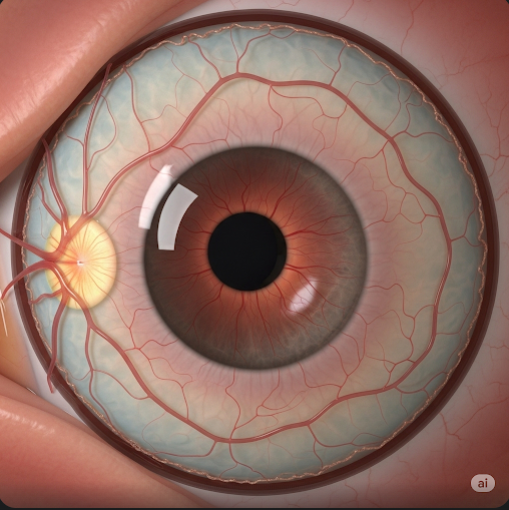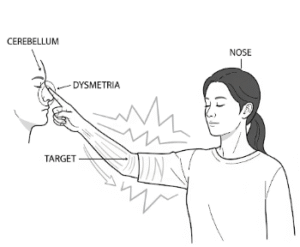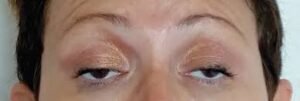Overview
Optic atrophy is a medical condition involving damage or degeneration of the optic nerve, which is responsible for transmitting visual information from the eye to the brain. This condition results in vision loss, which can be partial or complete, depending on the severity and underlying cause. Optic atrophy is not a disease itself but a sign of an underlying problem affecting the optic nerve. It is often permanent and requires prompt evaluation and management to prevent further deterioration.
What is Optic Atrophy?
Optic atrophy refers to the wasting away or degeneration of the optic nerve fibers, often due to impaired blood flow, inflammation, trauma, or disease processes. It leads to the loss of axons and the supporting glial cells of the optic nerve. The optic disc, which is normally pink and healthy, may appear pale or white on examination — a hallmark sign of optic atrophy.
There are two main types:
- Primary optic atrophy: Direct damage to the optic nerve without prior swelling
- Secondary optic atrophy: Follows optic nerve swelling or inflammation (e.g., from optic neuritis or papilledema)
Symptoms
Symptoms of optic atrophy vary based on the extent of nerve damage but typically include:
- Blurred or dim vision
- Loss of central or peripheral vision
- Reduced color vision (especially red desaturation)
- Visual field defects (e.g., tunnel vision or blind spots)
- Decreased visual acuity
- Pale appearance of the optic disc on eye exam
In many cases, the vision loss is painless and gradually progressive, although some forms may present suddenly.
Causes
Optic atrophy can result from a wide range of conditions that affect the optic nerve directly or indirectly:
- Glaucoma: Increased eye pressure damaging the optic nerve
- Optic neuritis: Inflammation of the optic nerve, often linked to multiple sclerosis
- Ischemic optic neuropathy: Poor blood flow to the optic nerve
- Trauma or compression: Head injury, tumors, or aneurysms pressing on the optic nerve
- Toxins and drugs: Methanol poisoning, certain antibiotics, and chemotherapy agents
- Nutritional deficiencies: Especially vitamin B12 or folate deficiency
- Genetic disorders: Such as Leber’s hereditary optic neuropathy (LHON)
- Infections: Including syphilis, tuberculosis, or meningitis affecting the optic nerve
Risk Factors
Several factors may increase the risk of developing optic atrophy:
- Advanced age
- Uncontrolled glaucoma
- Autoimmune diseases
- Smoking and alcohol abuse
- Poor nutrition or malabsorption disorders
- Exposure to toxic substances
- Family history of optic nerve diseases
- Neurological or systemic illnesses (e.g., multiple sclerosis, diabetes)
Complications
Optic atrophy can lead to serious visual and functional consequences:
- Permanent vision loss in one or both eyes
- Legal blindness if the condition is bilateral and severe
- Poor depth perception or spatial orientation
- Inability to perform daily activities such as reading, driving, or working
- Psychological effects, including anxiety or depression related to vision loss
Prevention
While optic atrophy cannot always be prevented, early diagnosis and management of the underlying causes can reduce the risk or slow progression:
- Control intraocular pressure in glaucoma
- Treat systemic conditions like diabetes and hypertension
- Avoid exposure to toxins and alcohol abuse
- Ensure proper nutrition, including adequate intake of B-complex vitamins
- Wear protective headgear during activities with risk of trauma
- Seek prompt care for any vision changes, eye pain, or neurological symptoms
Treatment Options in Korea
In South Korea, ophthalmology and neuro-ophthalmology services are highly advanced, offering state-of-the-art diagnostics and individualized care for optic nerve disorders. Treatment of optic atrophy focuses on managing the underlying cause and preserving remaining vision:
- Medical therapy: For conditions like optic neuritis (e.g., corticosteroids) or infections
- Surgical intervention: In cases of tumor or structural compression of the optic nerve
- Glaucoma management: Eye drops, laser therapy, or surgery to reduce eye pressure
- Nutritional support: Vitamin supplementation in cases of deficiency
- Vision rehabilitation: Low vision aids, orientation and mobility training, and support services
- Genetic counseling: For inherited forms like Leber’s optic neuropathy
Leading hospitals such as Seoul National University Hospital, Asan Medical Center, and Samsung Medical Center have experienced ophthalmologists and neurologists specializing in optic nerve disorders. Patients benefit from access to advanced imaging (e.g., OCT, MRI), electrophysiological testing, and integrated care.













